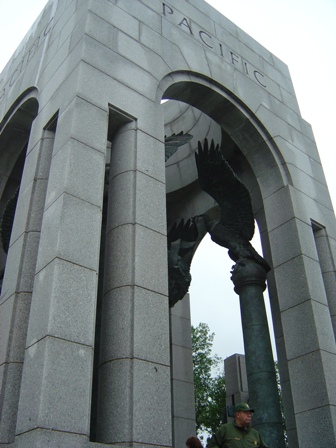
 |
The National World War II Memorial is a beautiful and fitting tribute to the 16 million men and womenof the Greatest Generation who met and defeated the greatest threat to freedom in the history of the world.
On a chilly, wet, gray day, my wife and son and I visited the Memorial. A misty rain was falling during most of our visit but it only served to add to the solemn nature of the site. There is no celebration of victory to be seen anywhere in the memorial, only memories of the battles, places and people. The marble base of the flagpoles that flank the entrance to the memorial carry the message that the United States' entered the Second World Warnot to conquer, but to liberate a world fast falling to the forces of tyranny.
My only regret in visiting the Memorial was the realization that it came far to late for most of the 16 million it honors, to see. Still, we saw eight or ten veterans, some in wheel chairs, visiting the memorial and wearing their veteran's caps or jackets proudly. Near the Pearl Harbor inscription, survivors of the attack speak with visitors and tell of their experiences on that "Day of Infamy."
Symbolism is all around, even before you enter the memorial. The very location of the site, between the Washington Monument and the Lincoln Memorial, is symbolic of the importance of World War II in preserving the ideals won under George Washington and defended under Abraham Lincoln.
To those who have visited the Memorial and want to remember; To those who plan to visit and wish a preview; To those who would like to visit but cannot - I present this remembrance of my own visit.
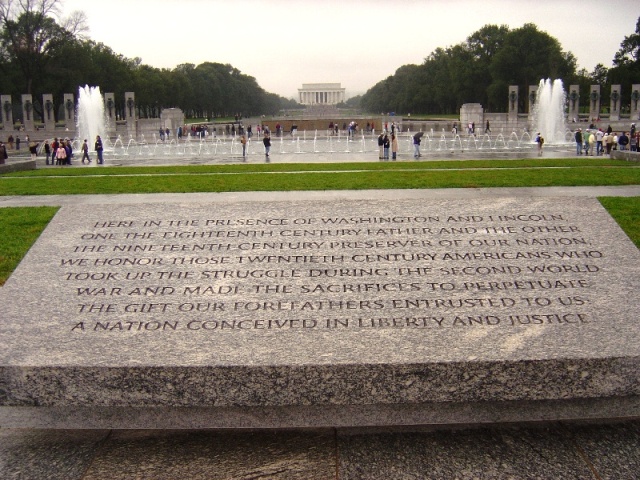 Large marble tablet at the 17th Street Ceremonial entrance to the World War II Memorial |
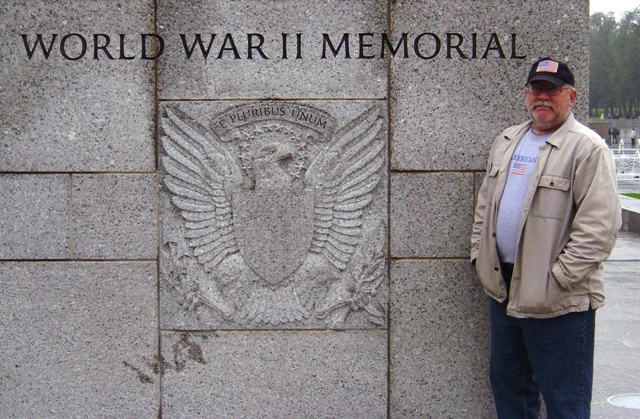 Here I am standing at the entrance to the Memorial. |
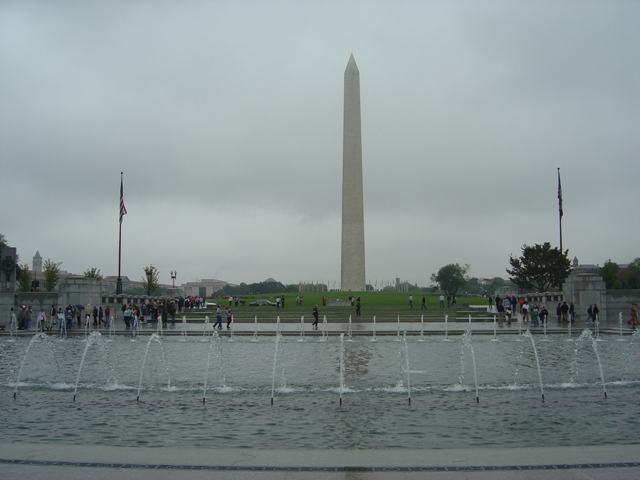 Looking back at the Washington Monument from behind the fountains of the World War II Memorial. Flagpoles flanking the Ceremonial Entrance and the bas-relief panels along the walkways are visible. |
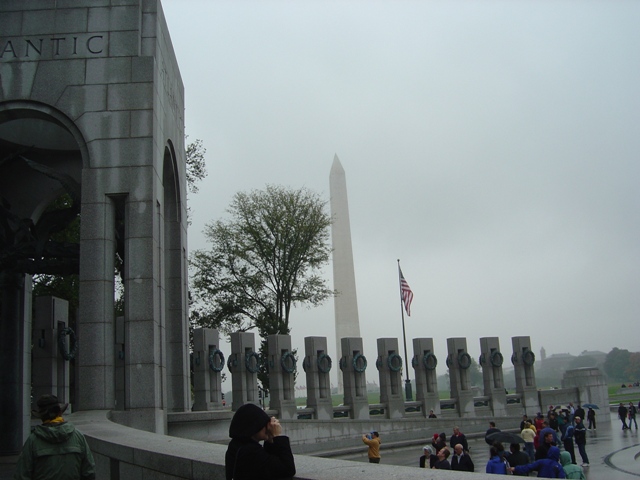 A view of the Atlantic Pavilion and Pillars to the right of it. Also visible is one of the flags at the entrance to the memorial. Rising above everything is the Washington Monument. |
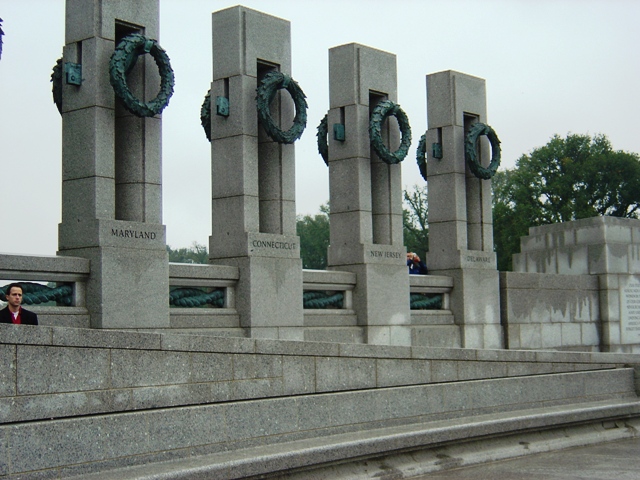 Just in front of the Pillars are walkways leading down from each side of the Pavilion to the fountain level. |
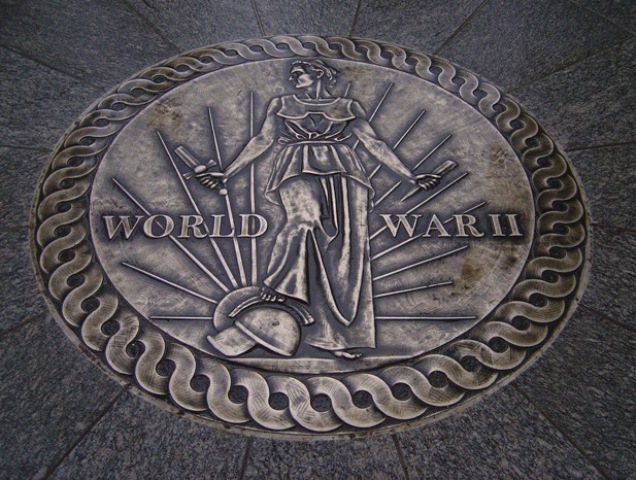 The World War II Victory Medal adorns the floor of each pavilion |
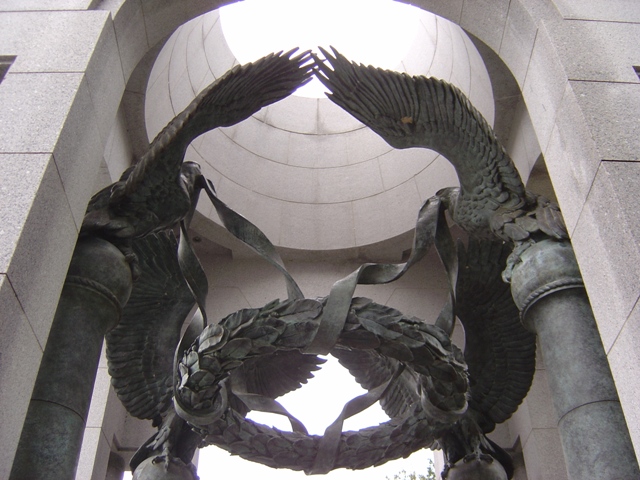 Four eagles support the symbolic wreaths at the open top of each of the pavilions. |
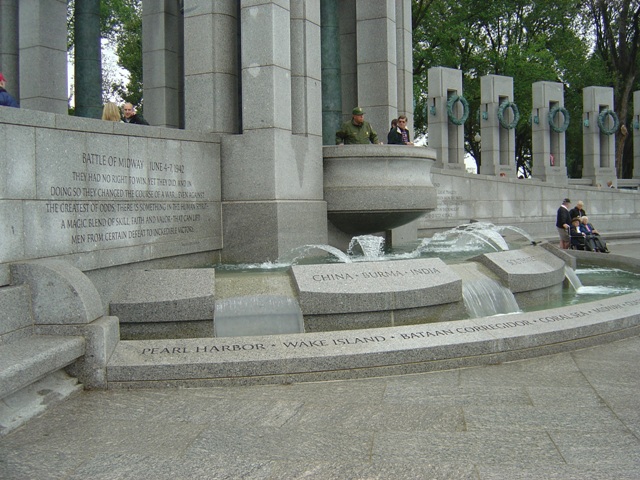 At the base of each Pavilion are small pools and fountains. Tablets recall theaters of the war. At the base are inscribed significant battles. |
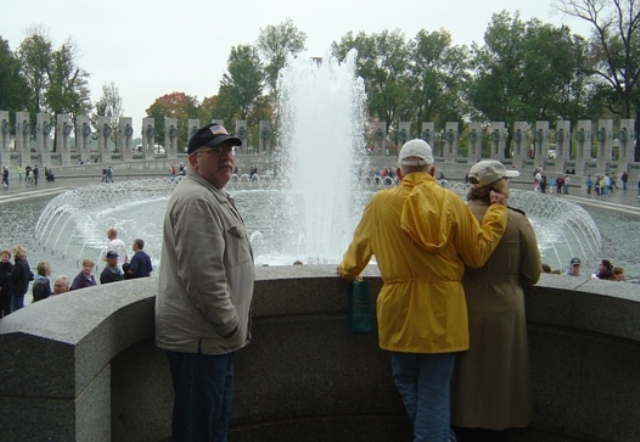 Each Pavilion has a balcony which overlooks the fountains and lower portion of the Memorial. In this view from the Atlantic Pavilion, the large fountains have obscured the Pacific Pavilion. |
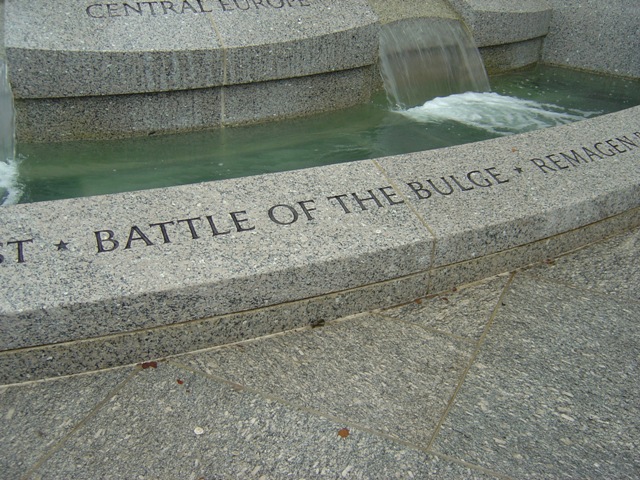 Theaters of war and battles that took place in each correspond to the Pavilion they adorn. |
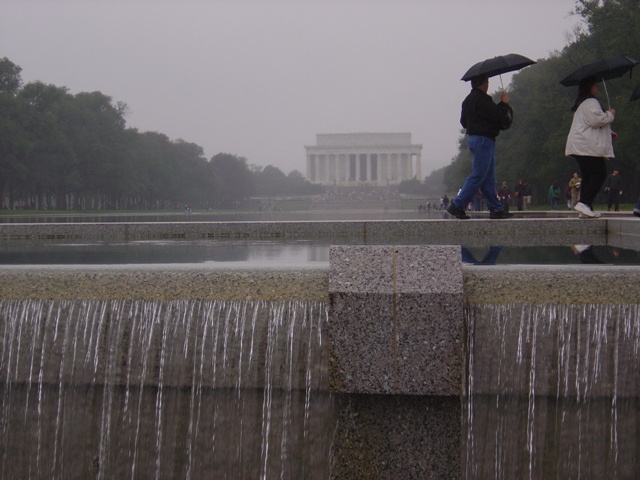 Water from the Reflecting Pool flows into the World War II Memorial in gentle waterfalls. |
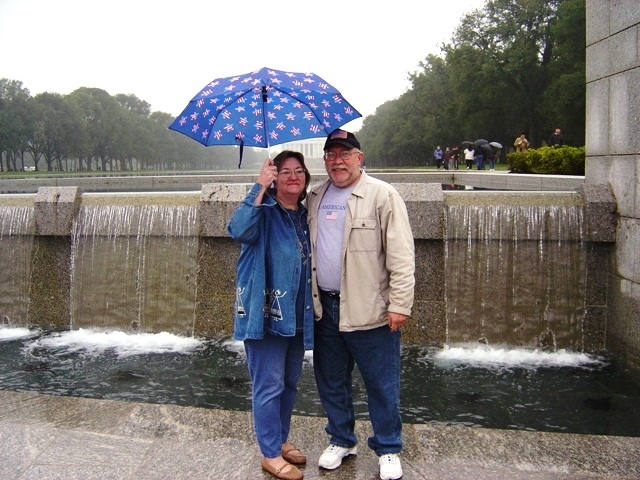 Christine and me in front of the waterfalls. |
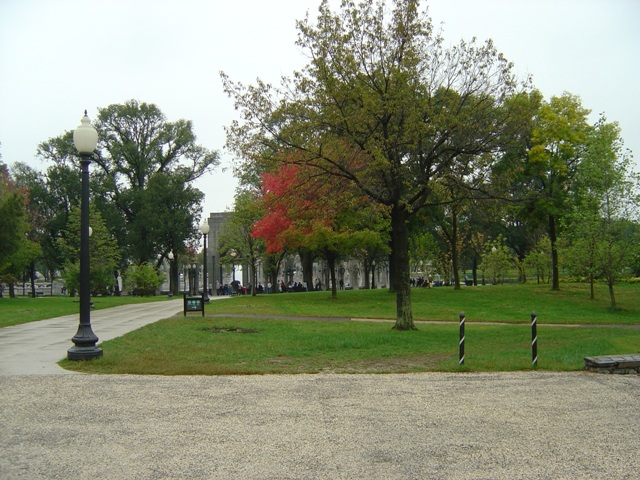 A view of the Memorial and its park-like setting. |
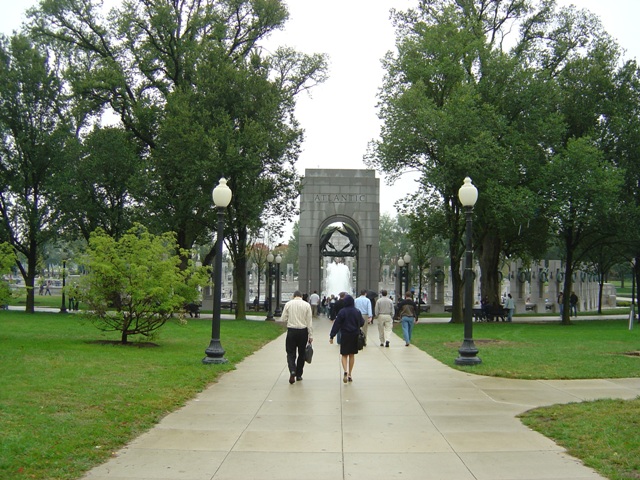 Visitors approach the Memorial from the Constitution Avenue side. The Atlantic Pavilion lies at the end of this walkway. |
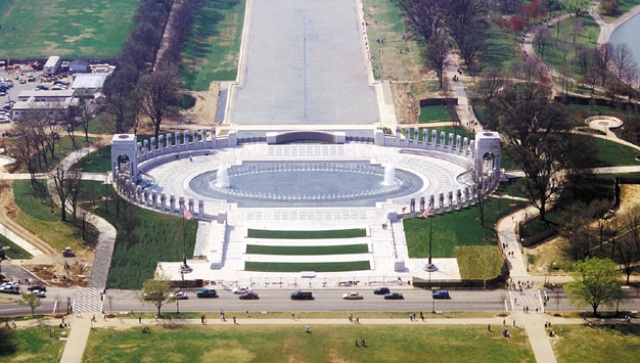 A view of the Memorial from the Washington Monument. (Photo by Richard Latoff). |
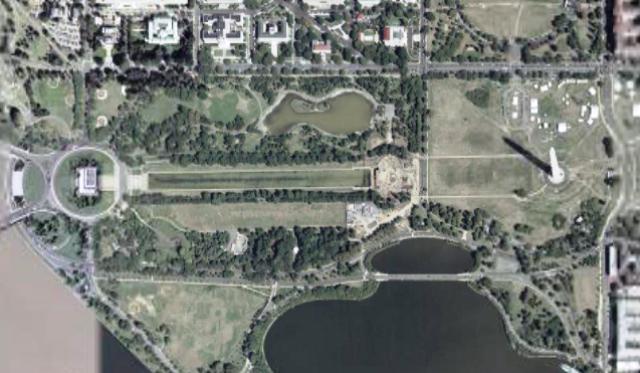 An aerial view of the Memorial. The Lincoln Memorial is at left, the Washington Monument at right. (Image by Google Earth). |
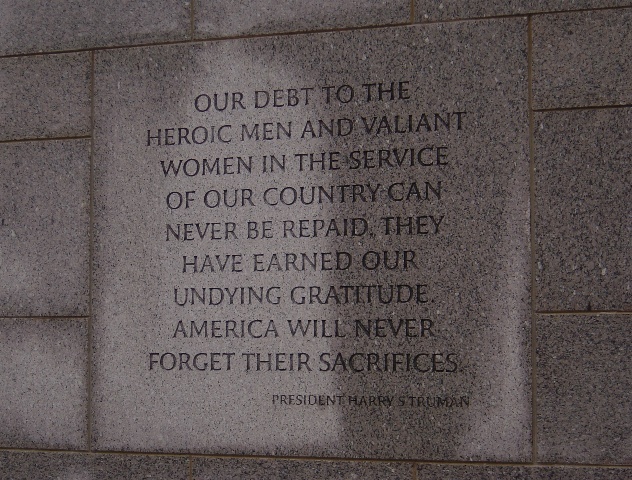 |
